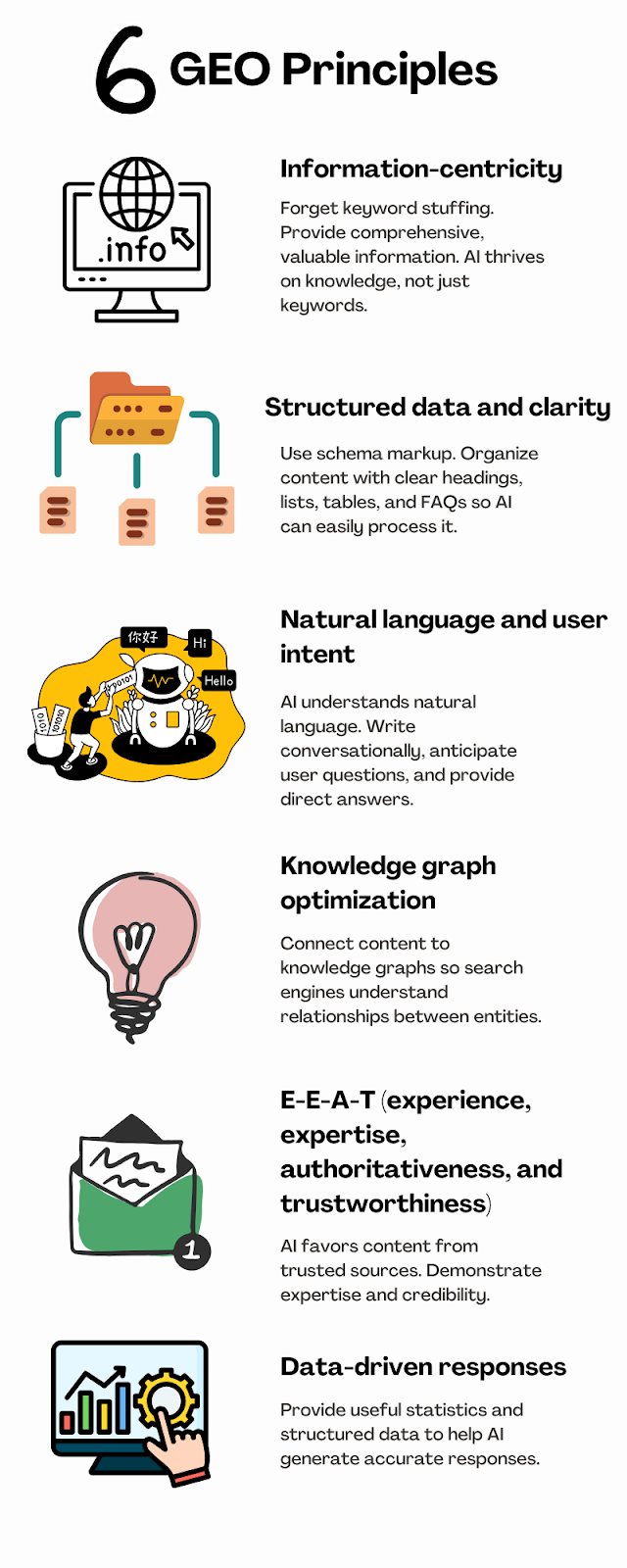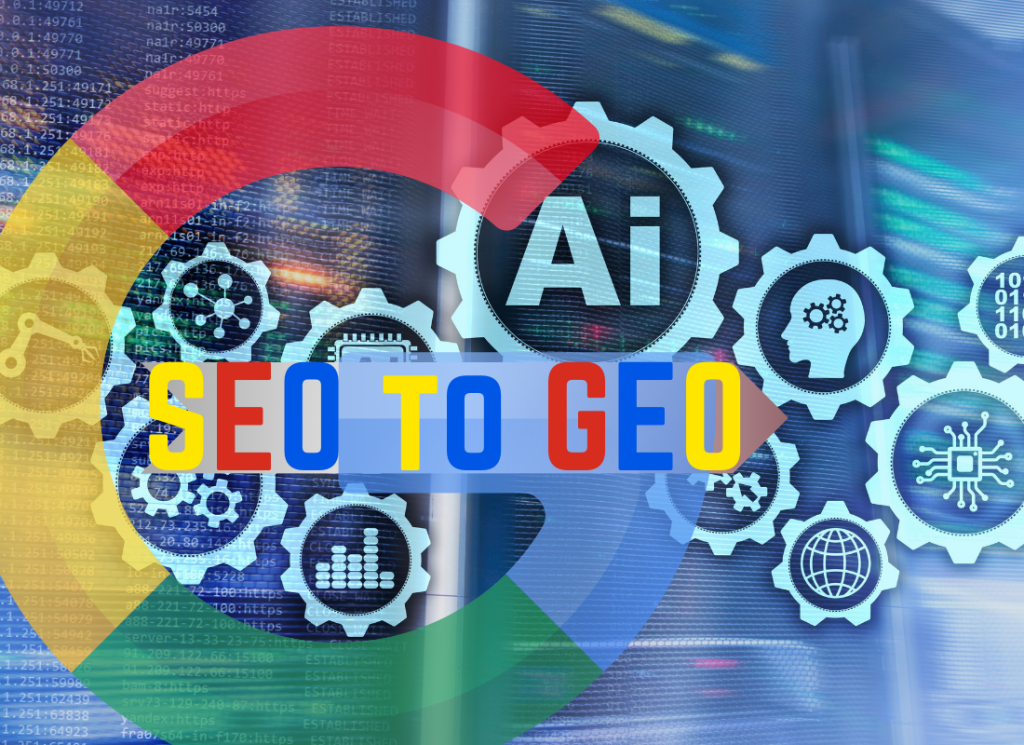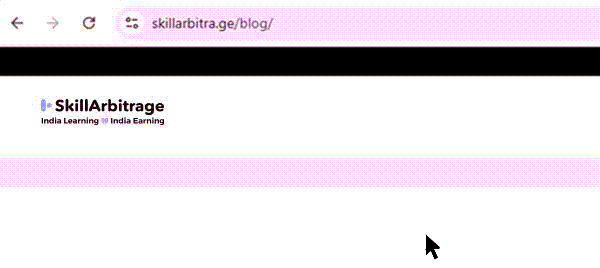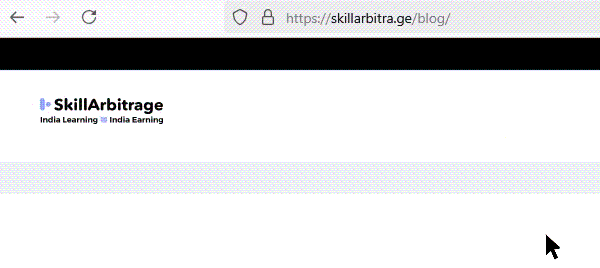This tactical guide introduces Indian freelance writers to generative search engine optimization (GEO) content writing—an AI-driven approach that adapts to Google’s evolving algorithms, ranks faster, and commands higher pay—helping them secure US assignments and capitalize on the upcoming lucrative global trend.
Table of Contents
Previously on The Irreplaceable Copy Consultant…
Raghunandan thought great copy was about clever words. Until his father, Parvathishankar revealed the 10th and final principle that separates writers from lifelong brand strategists: positioning.
While freelancers chase one-off SEO gigs, Parvathishankar shows how AI-powered memory-optimized content planning turns a writer into an irreplaceable brand architect.
But before long, his father unveils the next seismic shift in SEO – GEO.
(Continued…)
Introduction
Prominent copywriter Parvathishankar Dayanidhi Venkatanarasimhan Subramaniam Nair and his son Raghunandan Parvathishankar Dayanidhi Venkatanarasimhan Subramaniam Nair were having a hearty lunch of steaming hot masala dosa with coconut chutney and sambar, followed by a refreshing glass of mango juice. It was a daily ritual of the father-son duo to discuss business over lunch.
“Raghunandan Parvathishankar Dayanidhi Venkatanarasimhan Subramaniam Nair, you are quiet today. I take that business is not going well.” Ventured Parvathishankar.
“It’s nothing, father.” Raghunandan’s evasive response alerted Parvathishankar that something was afoot.
“Last I heard, you were working with Ivan Ivanovich Ivanov as a copy consultant for EverVibe.” The mention of Ivan opened up Raghunandan to the discussion.
“That is going fine, thank you. Ivan is happy with my work. Customer acquisition, engagement, and retention are back up, thanks to your memory optimization advice.”
“Then what’s eating at you, my boy?” Parvathishankar was concerned now.
“Well, it’s about another venture.” Ragunandan sheepishly answered.
“Another venture, huh?” Parvathishankar was wide awake now.
“I have some friends who are good at SEO writing. I pitched SEO content to some startups and let them write the content. It went on quite well for a while, but the business seems to be drying up.
New clients seem to be uninterested, and the clients we do have are mentioning budget cuts. And you know freelancers are first to go when there are budget cuts.” Raghunandan looked pained.
He hesitated for a moment before adding, “Just last week, a long-term client told me they’re cutting my contract. They said AI tools are cheaper and can produce SEO content just as well. I tried to convince them otherwise, but they had already made up their minds. It was humiliating.”
“Ah, you were exploring new opportunities without my knowledge. Just like me when I was your age.” Parvathishankar teased his son.
“I shouldn’t have, father. I tried it, and I failed. I’m sorry.” Raghunandan hung his head in shame.
“Oh, come on, son. Don’t be melodramatic.” Parvathishankar waved off his son’s apology.
They ate in silence for some time before Parvathishankar spoke up. “You know, your problem is easy to solve.”
Raghunandan looked up optimistically. “Really?”
“Really. You got to where you are by positioning yourself, and you will get to the next stage by repositioning yourself.”
“How do I do that? Looks like I’m about to be repositioned to ‘fired.’” Raghunandan chuckled morosely.
“Don’t be a defeatist in my house. In this house, we solve problems creatively. Now tell me. Why do you think there’s a lack of interest in SEO services?” Parvathishankar’s voice was stern.
“I’m not sure, but I think it’s something to do with AI.” Raghunandan shrugged.
“Of course, it has to do with AI. Almost every new development will have something to do with AI shortly.” Parvathishankar proclaimed. “But what exactly is happening in SEO that’s causing your troubles?”
“I think writing SEO content is becoming easier with AI tools. So brands don’t want to spend too much money on freelancers.” Raghunandan voiced his suspicions. “AI has been a boon in my copy strategy work, but I think it’s killing my SEO business.”
“Correct. But there’s one more factor.” Parvathishankar pontificated. “Many businesses are focusing on GEO more than SEO.”
“GEO? What is that?” His wily father had taken Raghunandan by surprise once again.
Parvathishankar leaned back, wiping his hands with a crisp white napkin. “Generative SEO, my boy. The next seismic shift in search.”
“Generative SEO?” Raghunandan repeated.
“Yes. Traditional SEO was about keywords, backlinks, and optimizing for search engines. Then AI came along and changed the game.”
Raghunandan nodded. “AI tools generate SEO content instantly, making basic SEO writing a commodity. That is why clients are cutting costs.”
“Exactly,” Parvathishankar said. “But AI did not just change content creation. It changed how search itself works.”
Raghunandan looked puzzled. “How so?”
“Google is not just ranking pages anymore. It is generating answers. Users are not clicking links. They are interacting with AI-powered search.”
“Like Google’s AI Overviews?”
“Precisely. And what does that mean for SEO?”
Raghunandan thought for a moment before realization dawned. “Traditional SEO will not get the same traffic any more.”
Parvathishankar smiled. “Now you see it. If AI is generating answers, your job is not ranking pages. It is training the AI itself.”
Raghunandan’s mouth fell open slightly. “You mean… instead of writing for Google’s search engine, we write for Google’s AI?”
“Bingo.” Parvathishankar took a sip of mango juice. “That is where GEO, also known as generative SEO, comes in.”
Raghunandan exhaled, his mind racing. A new way to do SEO. A way to stay ahead of AI instead of being replaced by it.
He leaned forward. “Tell me more, Father.”
Parvathishankar grinned. “Finish your dosa first. You will need your energy. Simply put, GEO is about optimizing content not for search engines but for the AI that powers them. It is not about ranking pages. It is about shaping the answers AI generates.”
“In essence, traditional SEO manipulated algorithms. GEO educates them.”
“Educates them?” Raghunandan raised an eyebrow.
“Precisely. Google’s AI relies on vast amounts of data to generate responses. Your job as a GEO specialist is to provide that data in a clear, structured, and authoritative manner.”
“But how?”
Principles of GEO
“That is where GEO principles come in.” Parvathishankar tapped the table. “Remember these key tenets”
Information-centricity:
“Forget keyword stuffing. Provide comprehensive, valuable information. AI thrives on knowledge, not just keywords.”
Structured data and clarity:
“Use schema markup. Organize content with clear headings, lists, tables, and FAQs so AI can easily process it.”
Natural language and user intent:
“AI understands natural language. Write conversationally, anticipate user questions, and provide direct answers.”
Knowledge graph optimization:
“Connect content to knowledge graphs so search engines understand relationships between entities.”
E-E-A-T (experience, expertise, authoritativeness, and trustworthiness):
“AI favors content from trusted sources. Demonstrate expertise and credibility.”
Data-driven responses:
“Provide useful statistics and structured data to help AI generate accurate responses.”

Parvathishankar leaned forward. “You are not just writing for a search engine. You are writing for an AI trying to understand the world. Your content must be its textbook.”
“So, we are teachers for AI?”
“Exactly. The best teachers understand their students’ needs and provide clear, accurate information, just like my late father, Dayanidhi Venkatanarasimhan Subramaniam Krishnamurthy Nair did as a thermodynamics professor at IIT Kanpur. That is the essence of GEO.”
“This is fascinating, Father,” Raghunandan said. “But how do we implement these principles? What tools do we use?”
GEO tools and techniques
Parvathishankar smiled. “Patience, my son. We have laid the foundation. Now we are building the house. Remember, GEO is not just a theory. It is a practical skill. Here is how we bring it to life.”
Advanced keyword research
“First,” Parvathishankar began, “think of yourself as a detective, always seeking the truth. You need tools to uncover the knowledge that AI craves. Begin with advanced keyword research, not for stuffing but for understanding user intent.
Use tools like Ahrefs, SEMrush, or even Google’s own Keyword Planner. However, it goes beyond simple keywords. Look for question-based queries, long-tail phrases, and related entities. This will reveal the information gaps you need to fill.”
Structured data
“Next, structured data is your blueprint. Schema markup is crucial. Use Google’s Structured Data Markup Helper or Schema.org to ensure AI can easily understand your content’s context. Think of it as labeling every room in your house so a blindfolded visitor knows exactly where they are.”
Natural language processing
“For natural language processing, rely on tools like Grammarly or Hemingway Editor. However, do not just fix grammar. Focus on clarity and conciseness. Read your content aloud. Does it sound conversational? Does it answer questions directly? Remember, AI is trying to mimic human conversation.”
Knowledge graph optimization
“Knowledge graph optimization requires understanding entities and their relationships. Use Google’s Knowledge Graph API or tools like WordLift to identify relevant entities and connect your content to them. This is like building bridges between different islands of knowledge.”
E-E-A-T
“And for E-E-A-T, especially the ‘Experience’ portion, you must showcase your practical knowledge. Share case studies, personal experiences, and unique insights. Build your authority by demonstrating your expertise. This is where your unique voice shines.”
Data-driven responses
“For data-driven responses, use tools like Google Public Data Explorer or Statista. Include relevant statistics and data points in your content. Visualize data with charts and graphs. AI loves concrete evidence.”
An Example
“Now, let us talk about a practical example. Imagine you are writing about ‘best practices for remote work.’ Instead of just listing tips, you could use schema markup to define each tip as a ‘HowToStep.’
You could include statistics on remote work productivity and visualize them with a chart. You could interview remote work experts and share their insights, showcasing your ‘Experience.’ You could connect your content to relevant entities like ‘telecommuting’ and ‘digital nomad’ using knowledge graphs.”
“Remember, Raghunandan, GEO is about providing the best possible information for both AI and users. It is about being a problem solver, a teacher, and a trusted guide.”
“This makes perfect sense, Father,” Raghunandan said, his eyes gleaming. “However, what about the AI itself? How do we know what it needs?”
“Ah, that is where the real art of GEO lies,” Parvathishankar said with a wink. “And that, my son, is a skill you will hone with practice and continuous learning. However, always remember that the goal is to provide value. If you provide value to the user, you will provide value to the AI.”
Repositioning yourself from SEO expert to GEO expert
“But Father, you said my problem was easy to solve and that I needed to reposition myself,” Raghunandan reminded him. “How does all of this translate to regaining the momentum I lost? How do I get those clients back or find new ones when they think AI can do it all?”
Parvathishankar nodded. “Ah, yes, the practical application. Understanding GEO is your weapon, repositioning is how you wield it. You need to show them that AI is not replacing you. It is empowering you to provide far greater value.”
“First,
Let us address your recent failures. You said clients cut your contracts because they thought AI could replace you. That is a perception you need to change. Instead of pitching SEO content,’ pitch ‘AI-Enhanced GEO Strategies.’ Show them how you use AI tools to amplify your expertise, not replace it. Demonstrate that you understand how to leverage AI to train other AI. This is a crucial distinction.”
“Second, your pitching strategy needs a complete overhaul. Stop focusing on basic keyword rankings. Start showcasing how you can improve their visibility in AI-generated search results, like Google’s AI Overviews. Show them how you can optimize their content for knowledge graphs and structured data. Use examples like, ‘Imagine your brand being the featured answer in Google’s AI Overview, driving targeted traffic and building authority. ’ This is the language of GEO, the language of the future.”
“Second,
The US market is already shifting towards AI-driven search strategies. Brands are reallocating budgets from traditional SEO to AI-powered optimization. The companies that fail to adapt will fall behind, and they are actively looking for experts who understand this shift. Position yourself as the answer to this industry change.”
“Third,
Offer a ‘GEO Audit’ as an initial service. Analyze their current content and identify opportunities for improvement. Show them how their competitors are leveraging GEO and how they are falling behind. Provide a detailed report outlining specific strategies they can implement. This is like offering a diagnostic report for their online presence.”
“Fourth,
Create case studies showcasing your GEO expertise. Highlight specific examples of how you have helped clients improve their visibility in AI-powered search results. Use data and metrics to demonstrate your impact. ‘By implementing a GEO strategy, we increased our client’s visibility in AI overviews by X percent and drove a Y percent increase in organic traffic.’ Numbers speak louder than words.”
“Fifth,
Target startups and businesses that are actively investing in AI. They are more likely to understand the value of GEO and appreciate your expertise. Position yourself as a strategic partner, not just a content provider. ‘We help AI-driven businesses leverage the power of GEO to achieve their growth objectives.’ This is about finding the right audience, the right partners.”
“Finally, Raghunandan, your confidence is key. You are not just an SEO writer anymore. You are a GEO strategist, a pioneer in the age of AI. Believe in your value, and others will, too. This is about internal repositioning as well as external.”
Parvathishankar held his son’s gaze. “Your clients do not just want content. They want strategic positioning in an AI-first world. Give them that, and your income will not just double. It will multiply.”
(To be continued…)







 Allow notifications
Allow notifications
